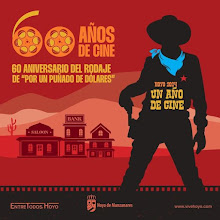Julian Halevy was born Julian Zimet on July 4, 1919 in
the Bronx, New York. Zimet was one of thousands of Hollywood artists and studio
employees whose career was interrupted by the late-1940s Red Scare and the
ensuing era of the blacklist. This didn't stop him, however, from writing
scripts for Gene Autry and Roy Rogers, or a pair of fascinating epic Westerns
and science fiction films in the 1960s, or a minor horror classic of the 1970s.
He attended City College of New York in the mid- to late 1930s. There, with his
friend and classmate, future screenwriter Bernard Gordon, he organized a
film-appreciation society, very likely the first ever such organization on the
campus of a public college in New York. After earning an honors degree in the
arts for a film that he made with Gordon, Zimet headed to Hollywood in 1940 and
was hired as a reader in the script department at Republic Pictures. Republic
made most of its money making low-budget Westerns and other genre films. Zimet
moved up to screenwriting in 1941 with the script for the Gene Autry Western
“Sierra Sue”. He was also the author of the original story as well as the
screenplay of the spy thriller “The Devil Pays Off”, which was filmed that same
year. Zimet spent the next four years in the army, and returned to find that he
couldn't get his old job at Republic back again. Instead, he turned to
screenwriting as a freelancer, on pictures like the Roy Rogers vehicle
“Helldorado” (1946), though his successes were few and far between; those
included the screenplay for the Alan Ladd-starring action-adventure thriller
“Saigon” (1948) at Paramount, and the script for the Gene Autry oater “The
Strawberry Roan” (1948) at Columbia's low-budget B-picture unit. By that time,
the post-World War II Red Scare had started and reached Hollywood, where the
studios became wary of employing anyone who had been a Communist Party member,
or spent time with known members; subsequently, Zimet was blacklisted in that
conservative environment. In 1949, he teamed up with Gordon to write
screenplays, as a package deal, and saw some limited success at Columbia, but
essentially Zimet was unemployed as a screenwriter for the first half of the
1950s. By 1955, he had moved to Mexico and was living a financially precarious
existence, but he managed, working as Julian Halevy -- the name he would use
into the mid-1960s -- to write a successful novel entitled
The Young Lovers. The novel was favorably reviewed by the New York
Times and even recommended by Book-of-the-Month Club, and was eventually sold
as a film project that took nearly ten years to reach the screen, a result of
convoluted business dealings that finally put it into the hands of Samuel
Goldwyn Jr. as a director, in a rather flaccid screen effort starring Peter
Fonda. In the meantime, Zimet collaborated with Gordon on the screenplay for
the movie “The Case Against Brooklyn” (1958), and was eventually brought into
the orbit of producers Samuel Bronston and Philip Yordan to collaborate on the
screenplay of the John Wayne-starring “Circus World” (1964). Zimet's other
major credits of the 1960s include the excellent science fiction film “Crack in
the World” (1965), the drama “Amanti” (1968), directed by Vittorio De Sica and
starring Faye Dunaway, and the Euro-western “Custer of the West” (1968),
starring Robert Shaw. In the following decade, he contributed a significant
entry to that era's horror film literature with the script for “Psychomania”
(1971), as well as working with Gordon once again, on another Euro-western
“Pancho Villa” (1972) and Horror Express (1972). Zimet retired in the 1980s,
and went on to live in Rome.
By Bruce Eder, Rovi
Today we celebrate Julian Halevy’s 95
th
birthday.







No comments:
Post a Comment